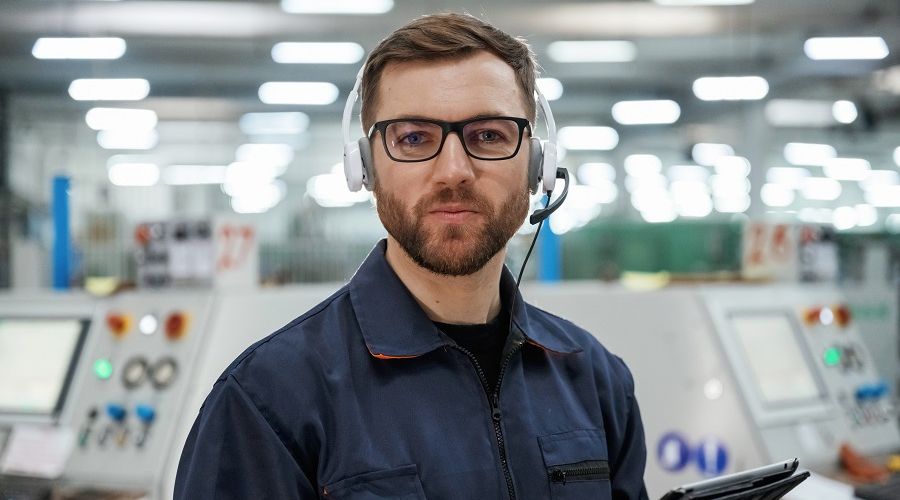The sound of machinery humming in factories, chatbots answering customer queries at 2 AM, and algorithms processing loan applications in seconds — automation has quietly woven itself into the fabric of modern work. While some workers worry about robots taking their jobs, others are discovering entirely new career paths that didn’t exist a decade ago.
The truth about automation’s impact on employment is more nuanced than the headlines suggest. Yes, certain roles are disappearing, but new opportunities are emerging at an unprecedented pace. Understanding these shifts isn’t just helpful — it’s essential for anyone who wants to thrive in tomorrow’s economy.
This comprehensive guide will help you navigate the changing landscape, identify which skills matter most, and discover actionable strategies to future-proof your career.
What is Automation?
Automation refers to the use of technology to perform tasks with minimal human intervention. Unlike simple digitization, which merely converts manual processes to digital formats, automation actively replaces human decision-making and execution with programmed systems.
Modern automation encompasses several technologies:
- Robotic Process Automation (RPA): Software robots that handle repetitive digital tasks
- Artificial Intelligence (AI): Systems that can learn and make decisions
- Machine Learning: Algorithms that improve performance through data analysis
- Internet of Things (IoT): Connected devices that operate autonomously
The key distinction lies in automation’s ability to adapt and respond to changing conditions, making it far more sophisticated than traditional mechanization.
Impact on Various Industries
Manufacturing
Manufacturing has experienced the most dramatic transformation. Smart factories now use collaborative robots (cobots) that work alongside human employees, increasing productivity while reducing workplace injuries. Companies report efficiency gains of 20-30% when implementing automated systems.
Customer Service
Chatbots and virtual assistants handle routine inquiries, allowing human agents to focus on complex problem-solving. This shift has created demand for conversation designers and AI trainers who teach machines to communicate more naturally.
Finance
Automated trading, fraud detection, and loan processing have revolutionized financial services. While some traditional roles have diminished, new positions in financial technology and risk analysis have emerged.
Healthcare
Automation assists with diagnostic imaging, medication management, and patient scheduling. Rather than replacing healthcare workers, these tools enhance their capabilities and reduce administrative burdens.
Transportation
Self-driving vehicles and drone deliveries are reshaping logistics. While this threatens traditional driving jobs, it creates opportunities in fleet management, remote vehicle operation, and maintenance.
Job Displacement: Which Roles Are at Risk?
Certain positions face higher automation risk due to their repetitive or predictable nature:
High-risk roles include:
- Data entry clerks
- Assembly line workers
- Basic bookkeeping positions
- Simple customer service representatives
- Routine security guards
Medium-risk positions:
- Administrative assistants
- Retail cashiers
- Basic accounting roles
- Insurance underwriters
- Some banking tellers
However, complete job elimination is less common than job transformation. Many roles evolve to incorporate automated tools rather than disappearing entirely.
Job Creation: New Opportunities Emerging
Automation creates jobs in several ways:
Direct job creation:
- AI specialists and machine learning engineers
- Automation technicians and maintenance staff
- Data scientists and analysts
- Cybersecurity professionals
- User experience designers for automated systems
Indirect job creation:
- Increased demand for human creativity and emotional intelligence
- Growth in personalized services and consulting
- Expansion of industries enabled by automation efficiency
- New business models requiring human oversight
Studies suggest that for every job automated away, 2.3 new jobs are created in related fields, though these often require different skill sets.
Required Skills for the Automated Future
Success in an automated workplace demands a combination of technical and human skills:
Technical competencies:
- Digital literacy and basic programming understanding
- Data analysis and interpretation
- Familiarity with automation tools
- Cybersecurity awareness
Human skills (increasingly valuable):
- Critical thinking and complex problem-solving
- Creativity and innovation
- Emotional intelligence and empathy
- Leadership and team collaboration
- Adaptability and continuous learning
The most valuable workers will be those who can effectively collaborate with automated systems while providing uniquely human value.
Adapting to the Future: Strategies for Success
Embrace Continuous Learning
Traditional education models can’t keep pace with technological change. Successful professionals commit to lifelong learning through:
- Online courses and certifications
- Professional development workshops
- Industry conferences and networking events
- Cross-functional skill development
Develop a Growth Mindset
View automation as a tool rather than a threat. Focus on how technology can enhance your capabilities and free you to tackle more meaningful work.
Build Hybrid Skills
Combine domain expertise with technological understanding. For example, a marketing professional who understands data analytics becomes significantly more valuable than one who relies solely on creativity.
Stay Informed
Monitor industry trends and technological developments. Subscribe to relevant publications, join professional associations, and participate in online communities.
Real-World Case Studies
Amazon’s Fulfillment Centers
Amazon deployed over 200,000 robots in their warehouses while simultaneously hiring 300,000 new human workers. Automation handled repetitive lifting and moving, while humans focused on quality control, problem-solving, and customer service.
JPMorgan Chase
The bank’s COIN (Contract Intelligence) system processes legal documents in seconds rather than hours. This freed lawyers to focus on strategy and complex negotiations, ultimately improving service quality and job satisfaction.
Siemens Manufacturing
Siemens’ “Factory of the Future” uses AI and robotics extensively while maintaining high employment levels. Workers now oversee multiple automated processes and focus on continuous improvement and innovation.
Challenges and Solutions
Economic Inequality
Challenge: Automation benefits may concentrate among highly skilled workers and business owners.
Solution: Invest in retraining programs, universal basic income pilots, and progressive taxation policies.
Transition Periods
Challenge: Time lag between job displacement and new job creation can cause hardship.
Solution: Government and corporate partnership in reskilling initiatives, portable benefits, and career transition support.
Skills Gaps
Challenge: New jobs require skills that displaced workers may lack.
Solution: Targeted education programs, apprenticeships, and employer-sponsored training.
Frequently Asked Questions
Will automation really create more jobs than it destroys?
Historical evidence suggests yes, but the transition period can be challenging. The Industrial Revolution ultimately created more jobs, and current data shows similar patterns with automation. However, the new jobs often require different skills and may be in different locations or industries.
How can I tell if my job is at risk from automation?
Evaluate your role based on these factors: How repetitive are your tasks? Do you work with predictable data? Can your decisions be reduced to rules? Jobs involving creativity, complex problem-solving, and human interaction face lower automation risk.
What’s the best way to prepare for an automated workplace?
Focus on developing skills that complement automation rather than compete with it. Invest in continuous learning, build strong interpersonal skills, and gain familiarity with the automated tools in your industry. Consider roles that involve managing, maintaining, or improving automated systems.
Should I be worried about AI taking over completely?
Current AI excels at specific, narrow tasks but lacks general intelligence and creativity. Humans remain essential for strategy, innovation, ethical decision-making, and complex interpersonal interactions. The future workplace will likely feature human-AI collaboration rather than replacement.
How fast will these changes happen?
Automation adoption varies significantly by industry and company size. While some changes occur rapidly, full transformation typically takes years or decades. This timeline provides opportunities for workers to adapt and reskill gradually.
Your Next Steps Forward
Automation isn’t coming — it’s here. The question isn’t whether it will affect your career, but how you’ll adapt to leverage its benefits while maintaining your value as a human worker.
Start by honestly assessing your current role and industry. Identify which aspects of your job are most likely to be automated and which require uniquely human skills. Invest time in developing both technical competencies and the soft skills that will become increasingly valuable.
Remember, every major technological shift has created more opportunities than it destroyed, but only for those who proactively adapted. The workers who thrive will be those who view automation as a powerful tool to amplify their capabilities rather than a threat to their livelihood.
The future belongs to those who can work alongside machines while bringing creativity, empathy, and strategic thinking to the table. Start preparing today, and you’ll be ready to seize the opportunities that automation creates tomorrow.

